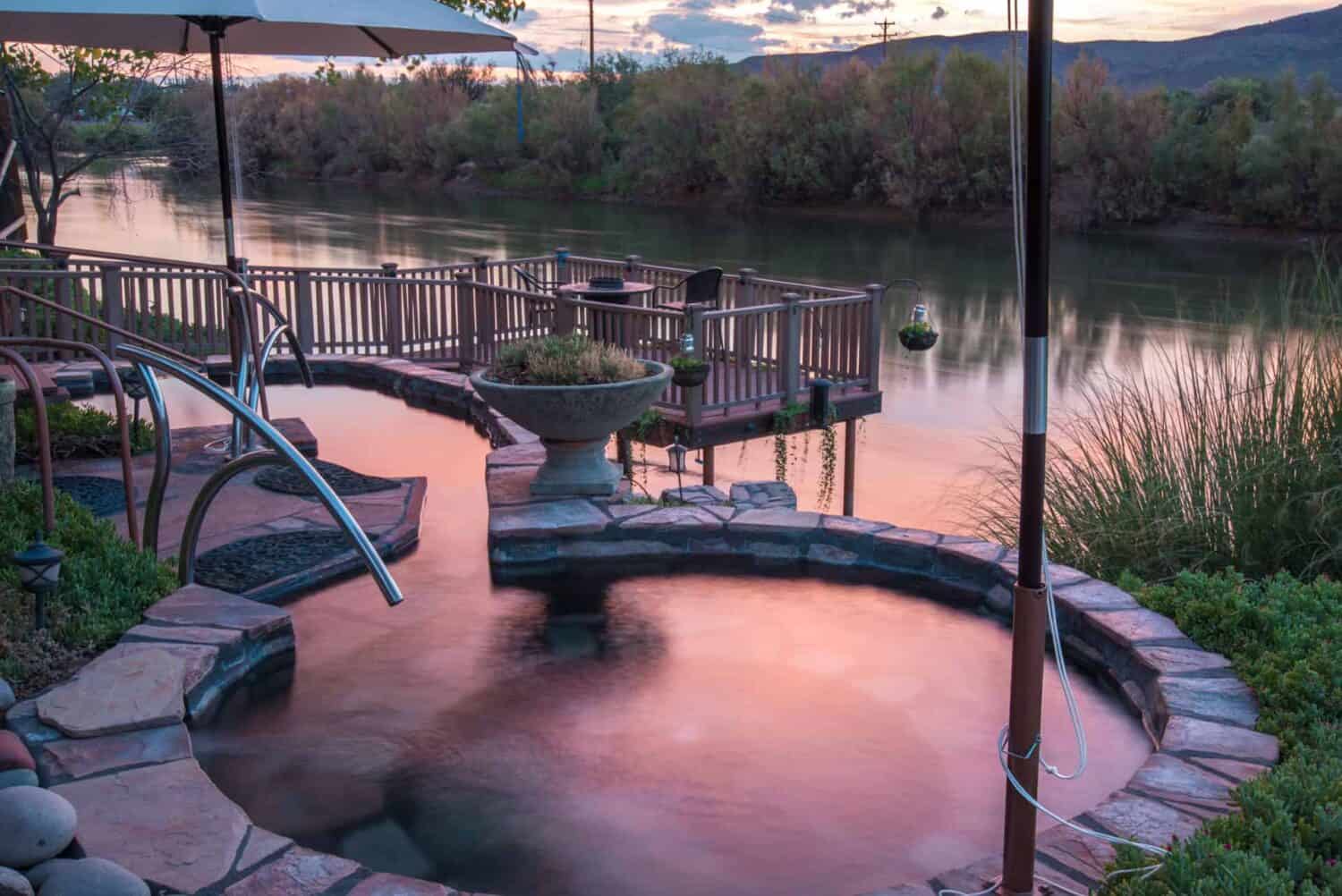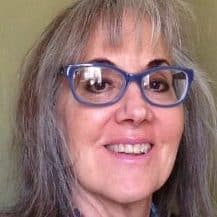The Truth or Consequences city commission held a workshop Oct. 26 on its most important asset and draw—the hot springs.
City Manager Bruce Swingle, asked to find an expert to speak to the city commission, tapped the Office of the State Engineer. He warned city commissioners at the Oct. 12 meeting they would probably find the OSE, which oversees all water rights and well permits, “isn’t too interested in the hot springs.”
The workshop lasted 40 minutes, the OSE attending by phone. The city didn’t introduce the OSE representatives, but they were from the OSE District IV office in Las Cruces—Water Resources Professional Yvette Lopez, Water Resource Manager Sarah Rodriguez and Water Resource Manager Cheryl Thacker.
What precipitated the city commission’s request to have experts inform them about the hot springs is a “threatened and pending litigation” case that was on the closed, executive-session agenda in September.
The city has filed as a protestant, along with several other parties, to contest the 400 acre feet a year of commercial hot springs water the Riverbend Hot Springs is requesting under the name “Cloverleaf Trust,” set up by the owners, the Foerstner family.
The Riverbend Hot Springs is located at 100 Austin St. The Cloverleaf Trust applied to the OSE for the 400 AFY more than five years ago—April 2017.
An OSE hearings officer will decide the case and is essentially an administrative judge in the matter. He will hear evidence and legal arguments from the parties, which is an ongoing legal expense for the city and private-party protestants. The OSE website active case file document, dated Sept. 1, states Cloverleaf Trust has no scheduled hearings. The more recent Oct. 3 active case file is empty—probably a posting error.
The Sierra County Sun did a five-part series on the briefs that had been filed by the parties nearly two years ago. More briefs have since been filed. Links to those articles may be found at the bottom of this article.
The Sierra Grande Lodge, a protestant, filing as “T or C Properties,” hired expert hydrologic consultant Tom Meyers. Myers’ research shows there is no new water to give Riverbend—the hot springs basin has already been massively over-appropriated.
Citing the Charles V. Theis report, a four-year study of the hot springs ordered by the U.S. Geologic Survey, completed in 1941, Meyers said the hot springs basin naturally discharges 2,100 to 2,500 acre feet a year into the Rio Grande. Meyers warned that drought and climate change have probably decreased the yearly discharge in the intervening 80 years.
To appropriate more than the natural discharge amount through pumping is hurting the hot springs aquifer, Meyers said. Pumping changes the slope of the hot springs water table, making it lower than the Rio Grande, which allows river water to seep into and contaminate the hot springs, lowering temperatures. Lower temperatures may be considered an impairment by protestants who hold senior water rights, Sierra Grande argues.
Pumping more than 2,000 or so acre feet a year from the hot springs also means recharge cannot keep up with use, Meyers said. Pumping depletes the resource. It takes 4,000 to 11,500 years for the hot springs to recharge—the process of rainfall filtering down to magma layers and eventually forcing its way up through limestone cracks and folds to artesian wells—before a hot-springs soak can be enjoyed, Meyers points out, citing Theis’s research.
Meyers totted up domestic and commercial well appropriations in the hot springs water basin recorded in the OSE water data base. Over 12,200 acre feet a year have been “claimed for diversion,” Meyers said.
We don’t know how much is being pumped or discharged, because the OSE only requires commercial hot springs wells to have meters.
Domestic well permits are easy to get. The applicant does not have to give legal notice and therefore potential protestants are left in the dark. In the past, the OSE permitted domestic wells at 3 acre feet a year and then at 1 acre foot a year for the last 10 years or so. The OSE grants them upon request if the applicant demonstrates a licensed well-driller has been hired.
Lopez said the OSE does not treat domestic well permit applications that access the hot springs any differently than other domestic well permit applications. Since the New Mexico Supreme Court 2013 Bounds vs. New Mexico State case, the OSE has been obligated to grant all domestic well permit applications, Lopez said.
Asked how many domestic wells are in the hot springs aquifer, Lopez said the water data system is available online and “that is public record,” Rodriguez said.
Although the OSE cannot deny domestic well permit applications, the city can, Lopez said.
City Commissioner Merry Jo Fahl recalled the city imposed a moratorium on domestic wells, thinking it was done in 2015.
I was a reporter for the Herald from 2006 to 2013. Articles I wrote in 2007 report the city commission mulled over whether to impose a moratorium for months. The hesitation and doubt triggered a well-drilling rush. About 45 new domestic wells were drilled before the city commission dropped the idea.
In 2012 then-Mayor John Mulcahy successfully led the city’s imposition of a moratorium, during which a study of the hot springs was conducted. It was enacted quickly enough that only five new domestic wells were drilled.
The city and private parties paid $50,000 to have New Mexico Tech Professor of Hydrology Mark Person and some of his students conduct a year-long study, published in 2013. The goal was to compare temperatures, well-head depths and other findings that Theis reported in 1941 to current-day measures. The study showed temperatures dropped between 3 and 10 degrees and the discharge into the Rio Grande had decreased about 400 acre feet a year. Person said “As far as we can tell, the aquifer has lost its artesian head.”
Nevertheless, the city commission lifted the moratorium and did not follow Person’s recommendations to put in monitoring wells.
In 2014 the city passed city codes 14-116 and 14-117 that control hot springs domestic well applications and their water discharge.
The well applicant must first produce the OSE domestic well permit documents. The installation of a “totalizing meter” that measures water flow and total dissolved solids is also required, records kept monthly and sent to the city yearly. If the city determines the well is in a chemical plume or will cause a chemical plume to drift, the application can be denied, according to 14-116.
The discharge must go into one of three places: the “hot ditch,” a French drain on the applicant’s property or into the city’s sewer, 14-117 states. The “hot ditch” is the city’s hot water drain that directly dumps into the Rio Grande, adjacent to T or C Rotary Park.
If the water goes into the ground via French drain, then the applicant is supposed to bring evidence from the New Mexico Environment Department that a Clean-Water-Act discharge permit has been obtained or the NMED has granted an exemption and no discharge permit is required.
Documents from a recent public records request to view the last 10 domestic well applications show the city is not enforcing the NMED Clean Water Act requirements. The city is also not enforcing the installation of totalizing meters.
The last 10 applications are dated from April 2022 to September 2020. Six of the 10 domestic wells discharge into French drains, three into the city sewer and one into the hot ditch.
It is curious that the city code does not also include Clean-Water-Act conformance and NMED discharge permits for hot springs water going into the hot springs drain. The CWA requires a discharge permit for any discharge into the waters of the U.S. The Rio Grande is a water of the U.S.
It is concerning that hot springs discharge is still going into the city sewer system. During City Manager Jaime Aguilera’s tenure, which ended around 2009, he worked to disallow such discharge, claiming the dissolved solids and corrosive salts were destroying the sewer system.
Records on the NMED website show the city was granted a renewed National Pollutant Discharge Elimination Permit April 2022 for its sewer discharge. Among new permit requirements is monitoring oxygen levels, since they were found to be low. As water gets warmer and saltier, there is less oxygen, which is needed to break down sewage.
At the conclusion of the OSE session, City Manager Swingle said, “I don’t go looking for trouble,” which is in opposition to the city’s legal status as a protestant to Riverbend’s application.
But City Commissioners Merry Jo Fahl and Destiny Mitchell insisted the city provide more information to them about the hot springs, suggesting New Mexico Tech be consulted.
Mitchell said she spoke with one of the Foerstners, (probably not a good idea during pending litigation) who informed her they had done a pump test that demonstrated no impact to other wells. She asked for a copy of the pump test.
Since the Foerstners were required to conduct a pump test by the OSE hearings officer, and then distribute the results to all protestants, the city should have already given Mitchell and the other city commissioners a copy.
Fahl said she asked the city for moratorium documents and the NM Tech study, but had not received them.
When Fahl asked Assistant City Manager Traci Alvarez about the city’s domestic-well application process during the workshop, Alvarez said she and the water/wastewater director approve the applications and determine where the French drains should go. She said nothing about NMED and the Clean Water Act requirements laid out in city code.
It appears the city commission has not been fully apprised of the Cloverleaf case documents or of city code concerning the hot springs wells and the enforcement of the Clean Water Act, their ignorance increasing the city’s legal exposure.
The lack of reporting and information gathering also does not bode well for the hot springs’ sustainability, the hot springs district and Rio Grande environment, or the city’s sewer system.


One has to wonder what the economic impact of the visitors that come because of the hot springs is on TorC. I am sure it is substantial. It would be disgraceful to have this important source of revenue disappear under the watch of this commission.
As a personal note, my partner and I lived downtown for a time, from 2014 – 2016, and we didn’t find Riverbend a particularly good neighbor. But that’s another story for another time.